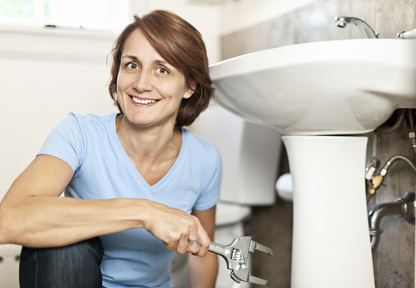They are making a number of great observations on the subject of Preventing Water Damage in the Bathroom overall in this post followed below.

The restroom is extremely at risk for wet build-up and possible water damage due to the regular use of water in it. This article supplies basic evaluation techniques to aid finding water damage hazards.
The constant use of water in the bathroom makes it exceptionally susceptible for moist buildup as well as potential water damages. By examining it regularly, you can minimize water associated problems.
The complying with collection of assessments is easy to do and need to be done once in every 3 months in order to keep your washroom in good shape and also to prevent possible water damages brought on by the tub, the shower, pipeline joints as well as plumbing, sinks, closets, as well as the commode
Do not overlook executing these evaluations and also be comprehensive while executing them. Bear in mind that these straightforward evaluations can conserve you a lot of cash by providing very early signs for water damage
Bath tub and Shower
The shower as well as bath tub need unique attention as well as upkeep. Check the floor tiles and replace if fractured. Make sure that there is no missing cement between the tiles. Check and also replace split caulking at joints where the wall surfaces meet the flooring or the bath tub. Clogged drains and also pipes issues will certainly prevent the tub from drying out and also may suggest significant problems below the tub. Seek advice from a professional right away to avoid architectural damages. Take note of stainings or soft locations around the bath tub walls as they may suggest an inner leakage.
Plumbing
Signs for water damage are hard to discover considering that the majority of pipelines are installed inside the walls.
Pay special interest to floor covering and also wall surfaces moisture and stains as they may suggest an undetectable plumbing trouble. Examine moisture levels in adjacent areas as well.
Sinks and Cabinets
Sinks and cupboards are subjected to wetness as well as moisture day-to-day and also are usually overlooked. Inspect routinely under the sink and on the countertop above it. Repair any drip in the trap as it may recommend drainpipe troubles. Look around the sink, slow draining pipelines might show an obstructed drainpipe. Change sink seals if they are broken or loosened.
The Bathroom
The bathroom is a prone water junction. Check the water lines and search for leakages around the bathroom seat, in the tube, and also under the water container. If you identify any kind of indicators of wetness on the flooring around the bathroom, check for leaks in the toilet edge and also container seals.
Know that hanging bathroom bowl deodorants increases the opportunities for obstructions.
TIPS TO PREVENT WATER DAMAGE IN THE BATHROOM
The average household uses approximately 80-100 gallons of water per person per day. For a family of 4, that's almost 2,500 gallons of water a week! The largest portion of this consumption comes from bathroom use. Flushing the toilet uses the most water, followed by taking a shower or bath. With that much water running through the home, water damage in the bathroom is bound to happen. Knowing how to spot signs of a water leak is essential to preventing long-term damage. This guide provides you with tips to reduce the impact of water damage on your bathroom.
CAUSES OF BATHROOM WATER DAMAGE
Pipe breaks are the most common cause of water damage we see in our daily jobs. The age of a pipe plays a large role in a pipe break as well as corrosion. Over time, the metal begins to break down, allowing water to escape. Frozen pipe breaks are also a concern in the winter months. Toilet overflows caused by paper products or children flushing inappropriate items. Degraded caulking around the toilet or bathtub can allow water seepage, sometimes behind the fixture, into the subfloor or walls. Condensation forms when the water in a pipe is cooler than the air temperature. Beads of water form on the exterior of the pipes, sometimes so much so that the water begins to drip and pool below. Sink or shower backups created by poor drainage. HOW TO PREVENT WATER DAMAGE IN YOUR BATHROOM
Inspect your toilet supply line for worn or frayed hoses and replace them as needed. Winterize your plumbing to prevent a frozen pipe break. Use vent fans to prevent condensation that can lead to mold growth. Routinely check and replace degraded caulking around your toilet or bathtub. Increase the temperature in your toilet tank and insulate your pipes during the warm summer months to keep condensation from forming. Use child safety locks on the toilets. Flush only toilet paper. "Flushable" wet wipes are actually not good for your plumbing system. Additionally, feminine hygiene products should not be flushed. Prevent water from escaping the tub or shower. Make sure shower curtains are in good condition. Inspect shower doors and replace the seal strip if necessary. Wipe up any water that accumulates on the floor and use bath mats. Water left to sit can cause damage to the tiles and flooring. Refrain from using bath products containing heavy oils to avoid a clogged drain.

As an avid reader about Common Causes of Water Damage in a Bathroom, I thought sharing that article was a great idea. Sharing is caring. You won't know, you may be helping someone out. I recognize the value of reading our article about Preventing Water Damage in the Bathroom.
Book A Service